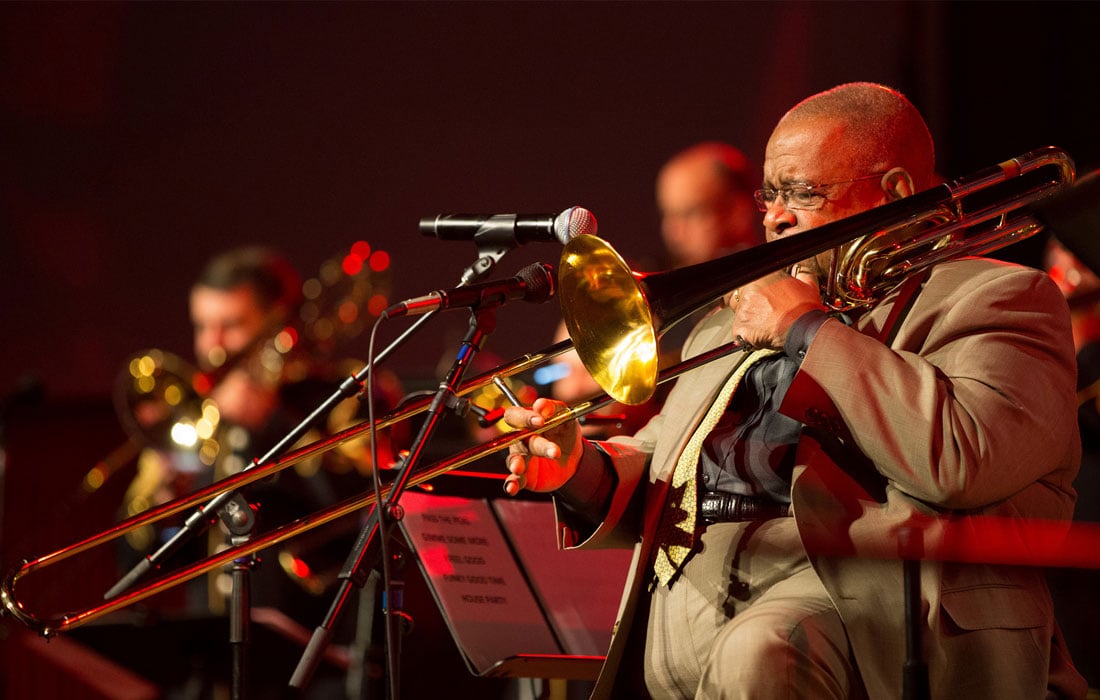
Photo: usarmyband on Visualhunt.com / CC BY
Why should noise end a musical career?
Noise-induced hearing loss can be career-ending for professional musicians, as demonstrated in a recent case at the Royal Opera House, writes Tim Turney.
“If music be the food of love, play on,” William Shakespeare wrote in Twelfth Night. Indeed, the emotional swell of an orchestra is a wonderful thing to experience. But for musicians, high noise levels during rehearsals and performances can subject them to excessive noise exposure, which could lead to irreversible noise-induced hearing loss (NIHL) and incurable tinnitus.
The 45-year-old musician has had to move to the countryside with his family for a quiet life
As an occupational hazard, the issue of noise has become a priority across sectors such as construction and food manufacturing. However, professional musicians suffer at an alarming rate – perhaps unsurprisingly. The Control of Noise at Work Regulations 2005 came into force for all industry sectors in Great Britain in April 2006, followed by the music and entertainment sectors in April 2008.
Noise exposure
Many musicians are reluctant to protect their hearing, thinking that it won’t happen to them. The biggest problem with the condition is that once it occurs, the damage is permanent. A survey run by Help Musicians UK in 2015 showed that 78% of people who suffered from hearing problems in their career believed that being a musician was the cause. 68% of musicians hadn’t had a hearing test in the last three years. When asked about their experience with hearing protection, while 81% of people believed they should use it – but only 67% had actually ever used any.
The long-term nature of noise exposure, which involves a combination of both noise level and exposure time, can accumulate and cause hearing impairment over the course of a working lifetime. Some people won’t notice the effects of hearing loss until retirement, but some notice it sooner.
Landmark case
A landmark legal case at the Royal Opera House in March of last year could send metaphorical shockwaves across the industry. The legal action involved a UK High Court judge ruling that a viola player, who was forced to give up his music career after developing acoustic shock and irreparable hearing damage from sitting in the line of fire of the brass section, could sue his employer. The 45-year-old musician has had to move to the countryside with his family for a quiet life after losing his high-frequency hearing and developing extreme sensitivity to noise, including his own playing.
This case established the first legal precedent around the condition in the UK. It is a game-changer for an industry the lawyer described as having “considered itself exempt from the same regulatory requirements as all other sectors because of the artistic nature of its output. This in our view has always been a dismissive view from an industry which creates and sells ‘noise’ as a product”.
Undoubtedly, this precedent will trigger other UK claims and may encourage lawsuits elsewhere in this international industry.
Possible solutions
What’s the answer to NIHL? Education has a part to play in raising awareness. Noise exposure measurements using hand-held sound level meters or personal noise dosimeters will provide useful data as part of a risk assessment.
Modern dosimeters that are connected by Bluetooth to a mobile phone app can be used to monitor measurements from multiple dosimeters remotely without disturbing musicians. Establishing hearing conservation programmes when necessary, based on the exposure data, would mandate musicians to routinely wear earplugs. In addition, regular hearing tests would be advisable to check the effectiveness of the controls for overexposure to noise. Ultimately, this is a wholly avoidable problem.
Tim Turney is Technical Product Manager at Casella.
www.casellasolutions.com

Join the Discussion
You must be logged in to post a comment.